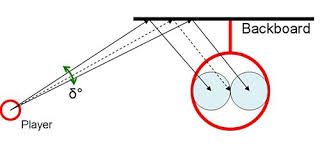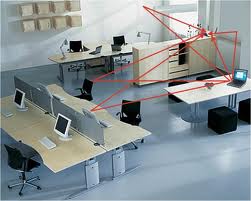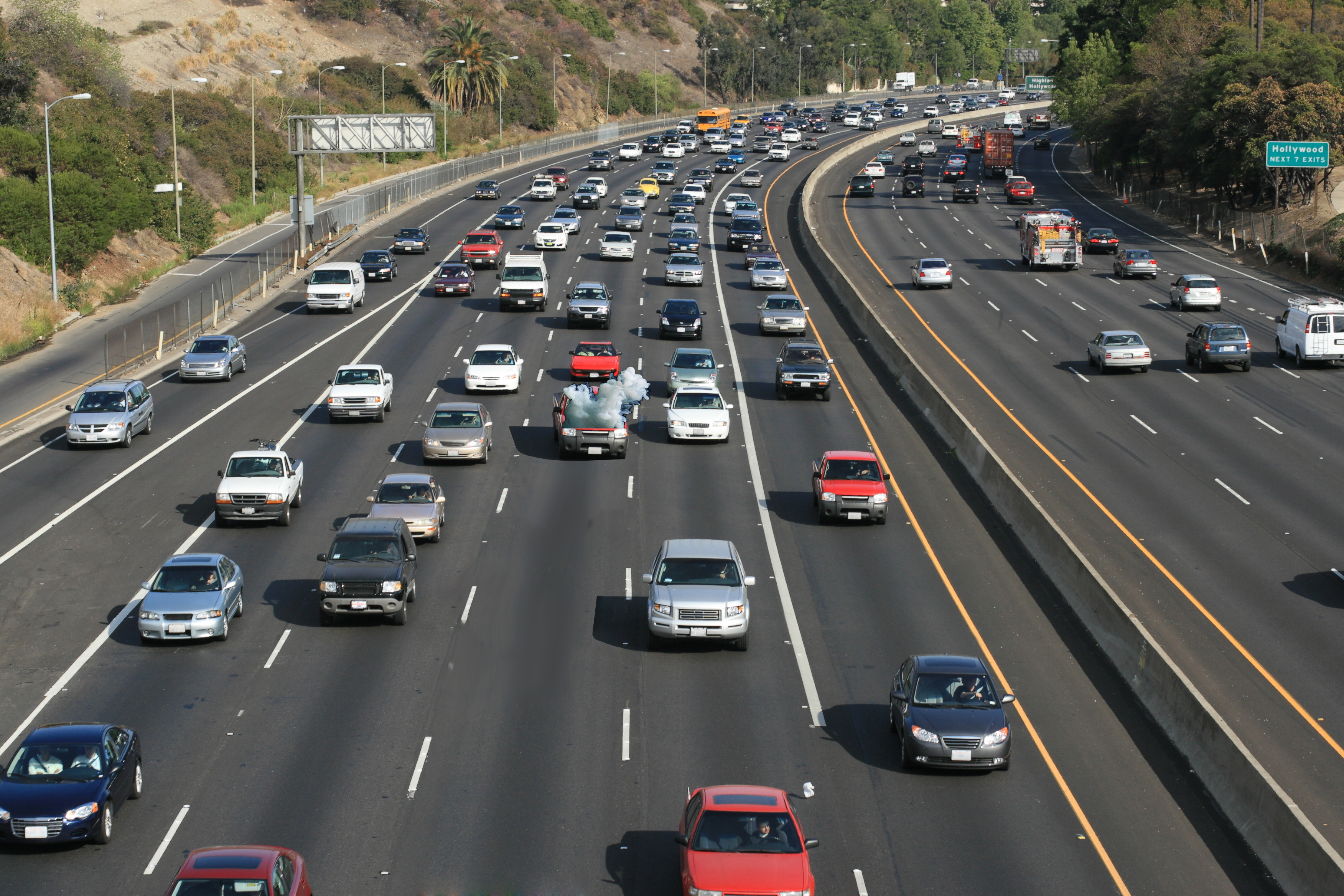Different RF behavior
There are many different problems that can occur when a RF signal is transmitted. The signal travels in a straight line and cannot negotiate around objects to arrive at a client radio. Because of this attenuation or loss can occur. The ideal scenario is a direct line of sight with no obstructions to cause a change to the transmission. This is just not possible for all clients as buildings have rooms with thick walls, heavy doors, stair wells, etc. If you can understand the different behaviors you can deploy a wireless network that can overcome the hurdles presented by reflection, refraction, absorbsion, scattering, multipath and diffraction.
Reflection happens when a signal hits a smooth flat object and bounces off the surface or reflects. Example: A bank shot in basketball. The ball reflects off the backboard to the basket
.
Refraction is when a signal passes through an object with a different density and bends the signal in another direction. A good example of refraction is a glass of water. The water refracts or bend the light to make an object appear in a different position.

Absorption occurs when an object completely takes in the signal and retains some or all of it. The effect is a loss of signal or in some cases a complete loss signal. A good example of absorption is a sponge. If you place a sponge on a spill it will absorb the spill

Scattering is caused by the signal hitting and uneven surface and reflects in many different directions. The reflection results in loss of amplitude and the single transmission is now several weaker transmissions.

Multipath occurs when two signals arrive at the same time. This happens by all of the different behaviors mentioned above. Say your laptop transmits signal one and it reflects off a wall. Then it transmits signal two which has a direct line of sight an travels directly to the receiver. Because of the reflection of signal one the signals both one and two arrive at the same time. The worst effecet of Multipath is data corruption. To combat multipath, MIMO has been implemented with 802.11 n and the effect of multipath has been reduced.

Diffraction the partial bending of a signal as it encounters an object. The entire signal doesn’t strike the object so half the signal continues on the original path while the othe half gets reflected onto another path. For example a traffic jam. One car has stalled in the middle lane. IT doesn’t affect the other lane in the fact that they do not have to change path they can continue on but the drivers in the middle lane have to change path to get around the stalled car.
